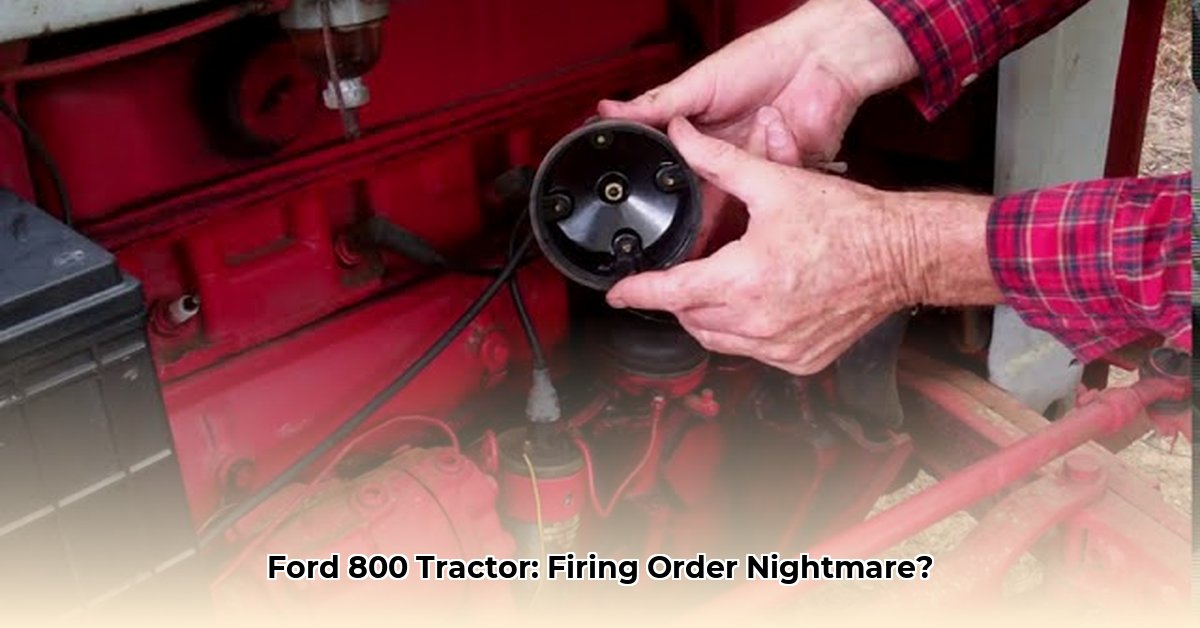
Let's get your Ford 800 tractor running smoothly! A faulty firing order can leave you stranded, but this guide provides a step-by-step solution for both novice and experienced mechanics. For more Ford tractor models information, see this helpful resource.
Understanding Your Ford 800's Firing Order
The Ford 800 firing order isn't fixed; it depends on your distributor's setup. The distributor sends sparks to the spark plugs in a specific sequence. Two possibilities exist: 1-3-2-4 or 3-1-4-2. Determining the correct sequence is key to restoring your tractor's performance.
Getting Your Hands Dirty: A Step-by-Step Guide
Safety First: Always disconnect the negative battery terminal before starting any work on your tractor's engine.
Tools and Materials:
- Socket wrench set (various sizes)
- Spark plug wrench
- Screwdriver
- Timing light (recommended)
- Pliers
- Owner's manual
Step 1: Finding Top Dead Center (TDC) for Cylinder #1
- Remove the spark plug from cylinder #1 (usually at the front).
- Rotate the engine crankshaft (using a wrench on the crankshaft pulley) until you feel the piston reach its highest point – this is TDC on the compression stroke (you'll feel significant resistance). A timing light can significantly simplify this.
Step 2: Observing Distributor Rotor Rotation
- With piston #1 at TDC, observe the distributor rotor's direction. Does it rotate clockwise or counter-clockwise?
Step 3: Determining the Firing Order
- The rotor's rotation dictates the firing order:
- Counter-clockwise: Firing order is 1-3-2-4.
- Clockwise: Firing order is 3-1-4-2.
Step 4: Connecting the Spark Plug Wires
- Connect the spark plug wires to the distributor cap terminals, precisely following the determined firing order. Ensure each wire is securely attached. Numbering the wires can aid accuracy.
Step 5: Reconnect and Test
- Reconnect the battery's negative terminal.
- Start the engine. If it runs smoothly, congratulations! If not, proceed to troubleshooting.
Did you know that a mis-wired spark plug can cause significant performance issues, even if the engine starts? A smooth running engine is the goal here.
Troubleshooting: When Things Don't Go as Planned
Even seasoned mechanics encounter challenges. This checklist helps resolve issues if your engine doesn't start or runs poorly:
- Retest TDC: Re-check TDC for cylinder #1. An even slightly off TDC measurement will lead to timing issues.
- Verify Rotor Rotation: Confirm your observation of the rotor's rotation.
- Inspect Spark Plug Wires: Check wires for damage (cracks, fraying, loose connections). Replace any damaged wires.
- Examine Distributor Cap and Rotor: Inspect for cracks or burning. Replace worn components. Replacing these parts is cost effective compared to repeated issues.
Alternative Methods: Advanced Diagnostics
For advanced users, diagnostic tools can precisely determine the firing order and check engine timing. A timing light can also validate your ignition timing after adjusting the firing order.
Safety Precautions
Always disconnect the negative battery terminal before working on the engine. If unsure about any step, consult a qualified mechanic.
Now get your Ford 800 back in action! Remember, accuracy is key in setting the firing order. A little patience and attention to detail will yield excellent results.